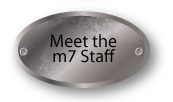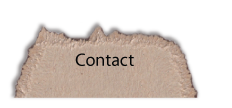



Fire Resistant Apparel FAQ
Frequently Asked Questions about the Fire Resistant Apparel we can provide you
What type of Fire Resistant (FR) apparel can m7 provide?
m7 Business Systems carries both Bulwark FR Apparel and Carhartt FR Apparel.
What is meant by the term FR (Flame Resistant)?
It refers to the ability of a material to self-extinguish upon the removal of an ignition source. FR is a short name for Flame Resistant Protective Apparel. Remember Flame Resistant Clothing is NOT fire proof.
Who wears Flame Resistant (FR) garments?
People who work in hazardous environments that may involve the following hazards: Electric Arc (electricians, electric utility lineman, etc.), Flash Fire (refinery, chemical and pharmaceutical workers, etc.) Combustible Dust Explosion (workers in the paper and pulp industry, food processing, paint, and many more industries). Plus ANY workers who come in contact with energized electrical equipment.
What is ATPV?
ATPV stands for Arc Thermal Performance Value, which is a value attributed to materials that describes their performance to exposure to an electrical arc discharge expressed in cal/cm2. The higher the number, the more protection.
What is NFPA® 2112?
NFPA® 2112 provides minimum performance criteria and sets clear guidelines for minimum design, performance, certification requirements and test methods for Flame Resistant garments for use in areas at risk from flash fires - such as those where flammable gases or vapors, or combustible dusts might be present. The standard calls for flash fire testing to be conducted at three seconds with a pass/fail rate of 50% total body burn under ASTM F1930 (Standard Test Method for Evaluation of Flame Resistant Clothing for Protection Against Flash Fire Simulations Using an Instrumented Manikin) testing protocols. Bulwark garments have been certified by Underwriters Laboratories to the requirements of NFPA® 2112, Standard on Flame Resistant Garments for Protection of Industrial Personnel Against Flash Fire and Canadian General Standards Board (CGSB) Standard 155.20, Workwear for protection against Hydrocarbon Flash Fire.
NFPA® 2112 Compliant
Bulwark Products marked as NFPA® 2112 Compliant are Certified by Underwriters Laboratories (UL) or other independent third party laboratories to meet the requirements of NFPA® 2112 Standard on Flame Resistant Garments for Protection of Industrial Personnel Against Flash Fire, 2012 Edition.
What are Hazard Risk Categories?
Hazard Risk Categories (HRC) are specified in the NFPA 70E safety standard, based on specific job tasks. Five categories range from Hazard Risk Category 0, that allows untreated 100% cotton, up to Category 4, that requires an FR shirt and pants, plus a double layer switching coat and pants. (NOTE: As of the 2012 edition of NFPA 70E, all garments for HRC 1 through 4 MUST be Arc-Rated. Older editions of the standard allowed for "layering" solutions using 100% cotton, non-FR T-shirts worn under rated FRC.
What level of FR clothing protection is typically needed?
A Flame Resistant garment is usually chosen based on an employer's own hazard analysis, which determines the right clothes for the potential incident energy exposures in a given work environment. Taking into account NFPA standard 70E, roughly 90% of all electrical trade workers generally fall into Category 1 and 2, meaning they require FRC with an ATPV rating of 8 or higher. Category 1 has a minimum arc rating of 4.
How do I choose the correct Flame Resistant garments?
Remember verify with your employer the Hazard Rating Category Level and ARC ratings needed for your particular job. Any flame and thermal protective fabric must provide the wearer with the expected degree of protection for the useful life of the garment. Garments are specified based on the employer's evaluation of workplace hazards. Click here to find more info on NFPA® 70E and Hazard Risk Classifications. Protective garments, which function as wearing apparel for normal work activities, must be comfortable and durable while achieving appearance that is acceptable to both the employer and the wearer. Click here to find detailed descriptions of the fibers and fabrics currently used to manufacture FR work apparel. In addition to these general considerations, there may be other hazards present such as chemical or molten substance exposure. Finally, these multi-use garments must be able to withstand laundering to remove soils and flammable contaminants and be returned to service without excessive color loss, fuzzing/pilling (surface appearance change) or excessive shrinkage.
Is it "the law" that some workers are required to wear Flame Resistant Clothing (FRC)?
That depends on how the company (employer) interprets the law. The OSHA General Duty Clause states: "the clothing cannot contribute to an employee's injury." In the case of an electrician or utility lineman, polyester blended clothing (which will burn, melt and drip at a low temperature) can certainly contribute to the worker's injury. Many employers choose FRC for their workers simply because it is the right thing to do to protect their workers while reducing their own liability.
How do normal fabrics react to ignition?
Normal fabrics and garments will burn away from the point of ignition with an increasing rate of flame spread and continue to burn after removal of the ignition source. Normal fabrics will continue to burn until they are extinguished or all flammable material is consumed.
How do FR fabrics react to ignition?
Flame-resistant (FR) fabrics and garments are intended to resist ignition, prevent the spread of flames away from the immediate area of high heat impingement, and to self-extinguish almost immediately upon removal of the ignition source.
Do FR garments prevent burn injury?
FR garments will not provide significant protection from burn injury in the immediate area of contact with the ignition source. However, flame-resistant garments do provide protection against clothing ignition and sustained flame spread. Remember FR garments are NOT fire proof.
Is 100% untreated cotton fabric "flame resistant"?
No, there is a common perception that untreated 100% cotton fabric is somehow "flame-resistant". This is simply not true. While heavyweight untreated 100% cotton fabrics may be more difficult to ignite, they can and will ignite and continue to burn if exposed to an ignition source.
How important is the cleaning of FR garments?
Proper cleaning and maintenance of any flame-resistant garment is essential to remove potentially hazardous soils and avoid a build up of materials that could mask performance. This includes flammable soils and greases as well as other contaminants such as build up of hard water ions that can coat fibers with flammable material. ASTM Standard F 1449 Guide for Care and Maintenance of Flame, Thermal, and Arc Resistant Clothing is a good general reference for care and maintenance of flame resistant and thermal protective clothing. Always follow garment manufacturer's care label recommendations and other published instructions or recommendations.
©2017 m7 Business Systems
1313 South Huron Street • Denver, CO 80223 • 303.777.1277 • fax 303.777.1872












